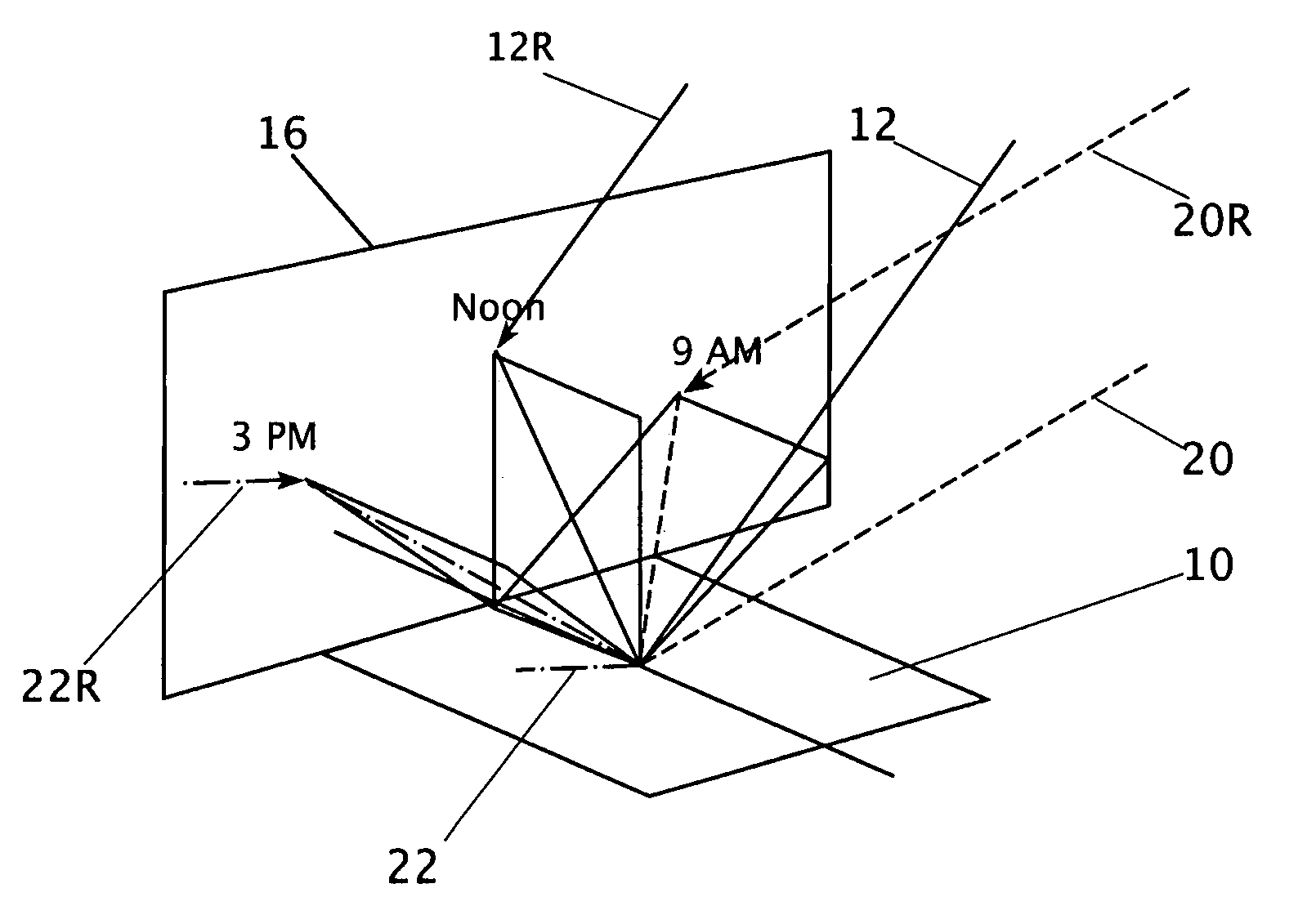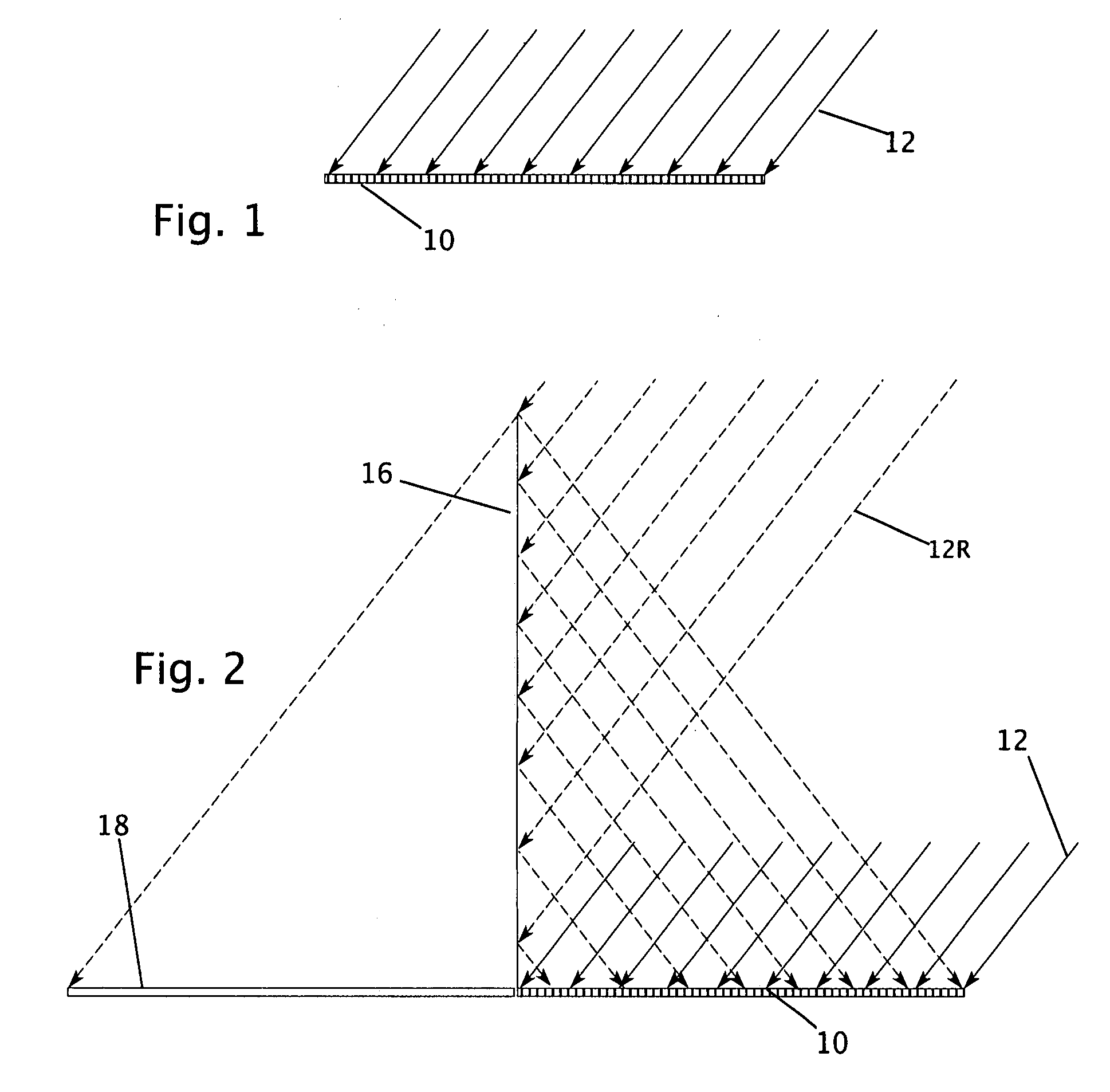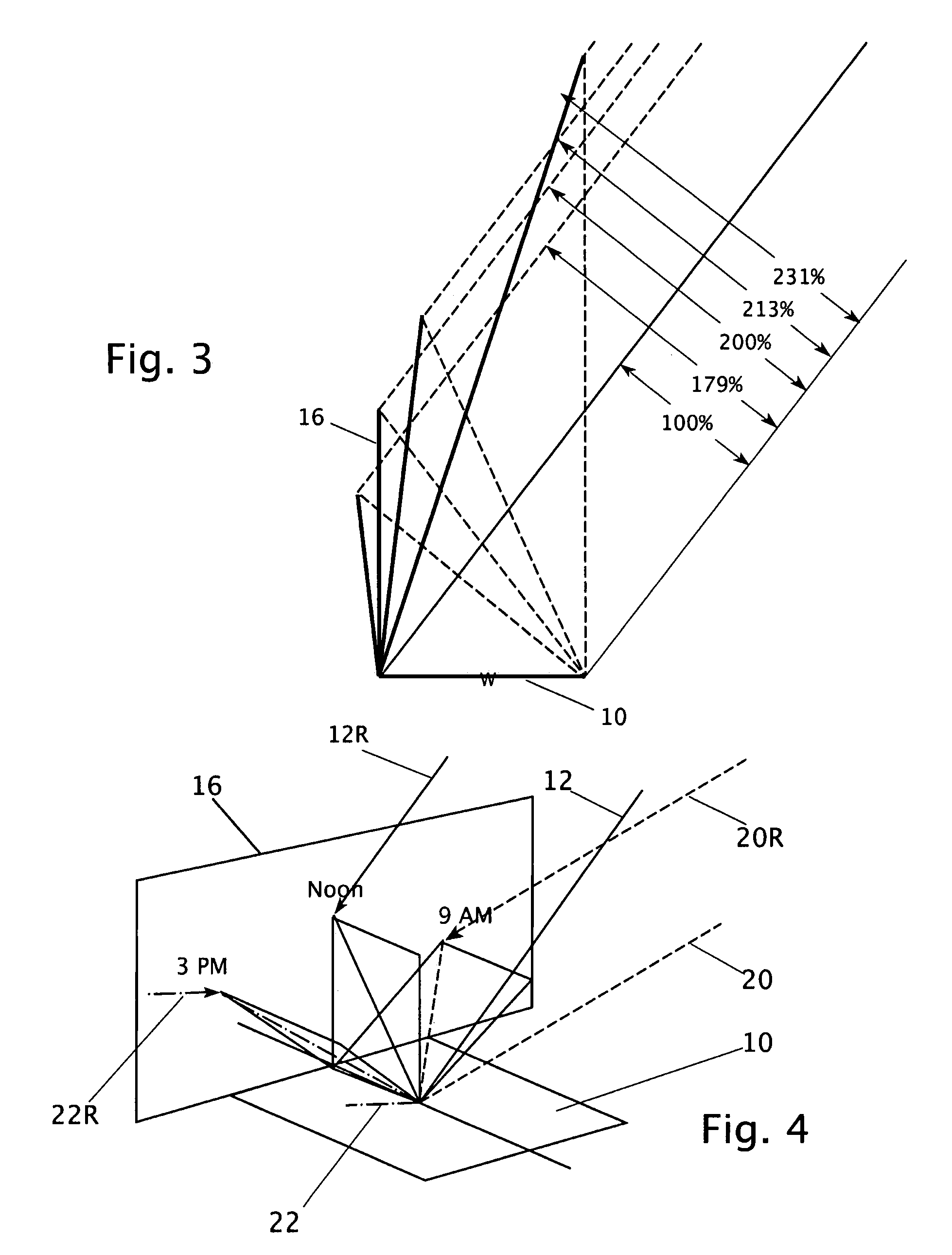Solar power harvester with reflective border
a solar power collector and reflective border technology, applied in the field of solar power collectors, can solve the problems of increasing the cost of fabricating, installing and maintaining such systems, prohibitively expensive systems for conventional commercial use, and typically expensive mounting or base structures for tracking structures
- Summary
- Abstract
- Description
- Claims
- Application Information
AI Technical Summary
Benefits of technology
Problems solved by technology
Method used
Image
Examples
Embodiment Construction
[0033]Referring first to FIG. 1, reference numeral 10 refers to a planar solar harvester. This might be of any form which harvest sunlight and converts it to useful power. This useful power might take the forms of heat and / or photovoltaic (PV) electricity. Typical examples of a planar solar harvester include (a) non-tracking: for example a sheet of contiguous PV cells or cell modules; or (b) tracking in one dimension to follow the sun: for example an array of parallel north-south oriented parabolic troughs which track the sun in an east-west direction. The plane of the harvester 10 may horizontal, or it might be sloped for some desirable purpose, such as positioning on a sloped roof.
[0034]Sunlight irradiates the harvester 10, as indicted by the sun rays 12. At noon and at the equinox of the year these are sloped from the vertical at an angle equal to the local latitude, and herein are illustrated at the latitude of San Francisco: 38° N.
[0035]At the equator, the rays 12 would be vert...
PUM
 Login to View More
Login to View More Abstract
Description
Claims
Application Information
 Login to View More
Login to View More - R&D
- Intellectual Property
- Life Sciences
- Materials
- Tech Scout
- Unparalleled Data Quality
- Higher Quality Content
- 60% Fewer Hallucinations
Browse by: Latest US Patents, China's latest patents, Technical Efficacy Thesaurus, Application Domain, Technology Topic, Popular Technical Reports.
© 2025 PatSnap. All rights reserved.Legal|Privacy policy|Modern Slavery Act Transparency Statement|Sitemap|About US| Contact US: help@patsnap.com



